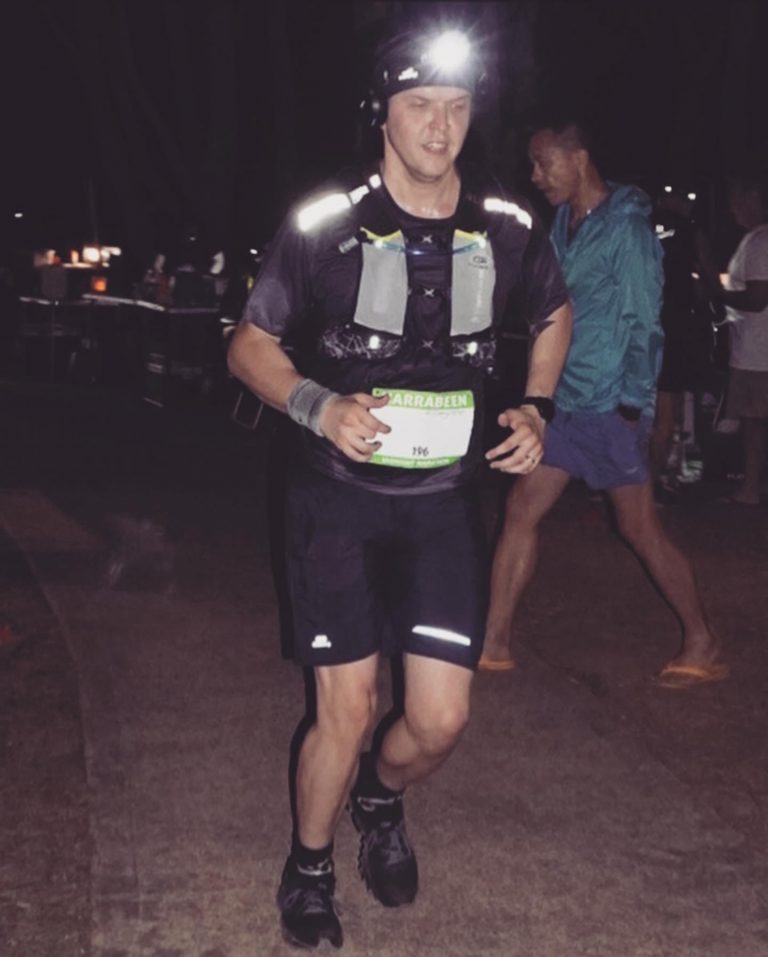There will be days when you go outside and the weather is perfect, the sun is up, a great time to go for a run. Then, not a moment after, it pours. As frustrating as this can get, it shouldn’t stop you from your running sessions. What I would recommend is to learn: how should you run in the rain?
1. Know the area and educate yourself about the weather
The most important thing about running in the rain is knowing where you will run and educating yourself about its weather conditions. This practice should be primarily done if you are planning to run in the rain. Avoid running on impulse or without a schedule.
The reason for a decent amount of knowledge about your location’s weather conditions is to avoid accidents such as lightning strikes, landslides and quicksands. Running without knowing if these phenomena occur often in your place of a run is a very risky thing to do. As a runner, you need to prioritize your health and safety first.
If landslides often occur on the place you want to run while raining, make sure to avoid those areas that are heavily affected by the phenomenon. Do not run on mountains and hills while raining.
This is a very risky thing to do. Lightning strikes are also life-threatening situations. These often occur on flat land surfaces like grass plains and savannas.
Stay away from trees and pole-like objects because lightning often loves to strike on those places. And of course, quicksands occur mostly after the rain. So if you are living in an area that rains a lot, make sure to avoid quicksand-prone areas.
Another thing to look out for while running in the rain is flood-prone areas. Running while the flood is rising is very risky and very dangerous. You can get diseases from even stepping from dirty floodwater (this is common in cities that flood often).
If your place does not have landslides, lightning strikes and quicksands, and you live in the city, avoid traffic-prone areas. Roads are usually slippery when wet and cars are susceptible to slippery surfaces. If your place has all of these phenomena, avoid running in the rain.
Runners should prioritize their utmost health and safety. Make sure to plot your run before running in the rain. Know safety locations or emergency places that you can go to if something goes wrong.
2. Avoid slippery surfaces
How slippery the surface is would be the second thing to look out for while running in the rain. Slippery surfaces are everywhere when it rains so make sure you know what to do if you encounter one.
First, not all grass surfaces are slippery, however, if you are near a cliff or living in a place that has high humidity, it is expected that grass surfaces should not be considered as a place for your run.
Although some running shoes can prevent slipperiness, these are not made to counter it fully. Some concrete surfaces are also slippery. If you live in the city and have no choice but to run on concrete, make sure your body can handle minor falls.
Thus, running on concrete on a rainy day is recommended to runners who are on their top conditions. If you just came back from an injury or currently have an injury, it is not recommended that you run on concrete or even run at all (depending on the severity of your injury).
The least slippery surfaces are asphalt and synthetic tracks. Asphalt is a very rough and hard surface. However, most asphalt roads are used by cars meaning they are accident-prone areas during rainy days. The benefit of running on asphalt is it is registered as local and national roads and can be easily found on any GPS device and map.
Synthetic tracks are often located in stadiums and huge outdoor running arenas. In some places, these stadiums and arenas are free to use, however, most of these places have entrance fees, even membership fees.
So if you are an invested runner who loves to run in the rain, it is recommended that you subscribe to these places. However, if you are a casual runner, just avoid slippery places and you can run in the rain.
3. Wear the proper clothing
Clothing is very important when planning to run in the rain. This will prevent you from getting ill and maintain your body temperature. Dressing properly can also keep you safe from accidents and wild animals. Your top clothing should have three layers. First is a base layer, such as a long sleeve shirt.
This is to prevent moisture from increasing while wearing the second and third layers of your clothing. The second layer is a waterproof shell top shirt. This is to maintain your body temperature. And the third layer is a waterproof jacket with a hoodie. This layer protects you from rainfall and cold temperatures.
When running in the city where cars are common, make sure to wear reflectorized clothing. This is to prevent you from getting into accidents as roads tend to be slippery when raining. When running in the wild, you can use earth-coloured clothes or reflectorized ones. This is to avoid being seen by predators.
Others would recommend that you can only have two layers while running. Three or more layers can be very heavy and can slow you down while running. This is all a matter of personal preference.
For bottoms or shorts, you can wear waterproof shorts. Make sure that they are tight enough to hold on to your waist and legs. This is where you will put your devices (that should be waterproof or covered in plastic).
Shorts tend to get heavier when wet, especially when they have things in their pockets. To avoid inconvenience, make sure that your shorts have a tight strap on the waist. You don’t want your shorts falling off while running.
4. Wear traction heavy running shoes
Tractions are those spiky covers under your running shoes. Tractions are usually already on your running shoes, however, some tractions are not made for heavy use or really slippery surfaces. Check your running shoes’ soles, if the tractions are worn out and not perky anymore, you need to consider buying new running shoes.
Good traction shoes are made from spikes or even elevate your feet. These kinds of traction shoes are best to use on soil-based surfaces. If you are planning to run on grass and sand surfaces during the rain, spiky traction running shoes should be highly considered. These tractions go deep into the soil preventing you from slipping or even falling.
However, spike traction shoes are not efficient when it comes to cement or asphalt running surfaces. Using spike tractions on these surfaces limits your shoes from doing their best to protect you. The best-spiked traction shoes for grass surfaces are those short ones for they provide better grip than long ones.
Spikeless traction running shoes are also available in the market. These traction running shoes are best on concrete, asphalt and synthetic track surfaces. They provide more friction to the surface thus limiting the slipperiness of the shoes.
These shoes should be avoided on grass and sand surfaces for soil and sand are not solid enough to create friction that prevents you from slipping. Furthermore, spikeless traction running shoes have tread and groove designs that provide more friction when running on slippery areas.
5. Make sure to have visibility equipment
It is important to remember that when running in the rain, your level of visibility decreases due to the raindrops and wind direction. Running in very low visibility is a very risky move and a dangerous thing to do.
Debris or other solid objects might be flying around and could lead you to serious injuries. Remember, health and safety are your primary priorities when running in the rain. Keeping these in mind gives you an efficient and beneficial run.
Make sure you have a flashlight. Flashlights are very helpful when running in the rain. Do not run in the rain during the night. Rainy day runs are the most recommended. Rainy night runs are highly dangerous and life-threatening.
Update your GPS watches or devices. This is to track your location and avoid areas that suffer from heavy rain. GPS tracking devices are also important to let your home know where you are or what is happening to you. Other devices like smartwatches or physical fitness watches have emergency hotline applications that can help you get out of dangerous situations.
And if worse comes to worst, these applications and devices can help you from your current situation. Make sure that your devices are waterproof, or at least, water-resistant. Malfunctioning devices can add up to your stress and can lead you to danger. Make sure that you also have extra batteries for these devices. A power bank is useful but not recommended since it adds up to your weight.
Two Important Things to Consider:
Health
Health is your number one priority. Running in the rain has its good benefits, however, if your body is not prepared or cannot handle the pressure of coldness and rainfall impact, you might consider running on dry days. Drizzles are not that life-threatening, however, normal rain and heavy rainfalls should be avoided if your body cannot handle it.
If you get cold easily or even have respiratory problems, you might reconsider running in the rain. Other than personal health problems, running in the rain is highly recommended for healthy runners.
Safety
Impulsive running in the rain should be avoided. This is a very risky thing to do. Vene if you have the proper equipment, you cannot and should not run during typhoon season. You are no match to the wind speed of a typhoon that usually ranges from 30 to 220 KpH. This wind speed is comparable to the speed of a car on a highway.
Getting hit by a car on the highway is a fast way to go. This is the same as battling and running on typhoon winds. Make sure you follow the steps above and protocols if there is danger nearby.
Frequently Asked Questions
It is a rough answer between yes and no. Generally, it is safe to run in the rain. However, without proper precaution and preparation, you decrease your safety and increase your risks of being in dangerous situations. That is why, repeatedly, you must remember, you should always run prepared.
Physically, studies have shown that there are not many benefits that you can get while running in the rain. Scientifically, it can decrease your sports performance. And since running in the rain means lower environmental temperatures, you do not sweat a lot, meaning you do not burn enough calories. Other than that, if you are not healthy, respiratory problems may occur.
However, running in the rain gives a lot of mental benefits. For one, it makes you more resilient. Running in the rain makes your body more prepared as if it acts like armour. Furthermore, it makes you more vigilant since running in the rain has so many preparations and safety protocols. It makes you more alert and makes you expect things ten times ahead of your current situation.

Marko Rakic is a trail runner and fitness enthusiast from Sydney, Australia. He is the lead writer for The Ultimate Primate and believes the best way to live a happy life is through constantly challenging yourself.
